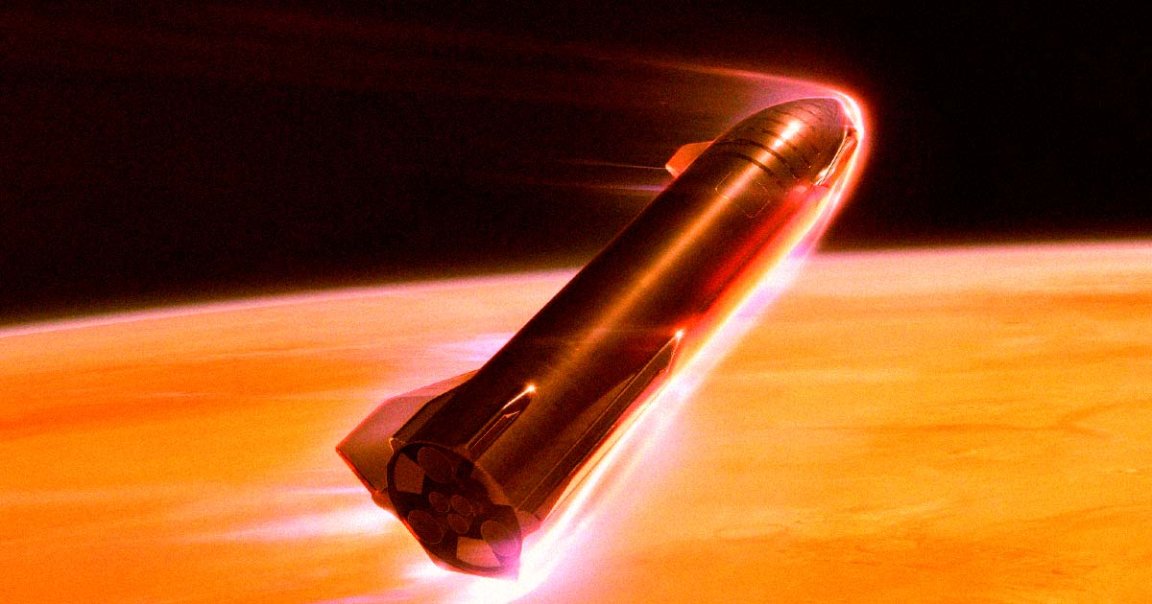
One Way Ticket
SpaceX CEO Elon Musk is infamously terrible at setting deadlines and making predictions — and his latest comments likely aren’t any different.
Specifically, Musk announced over the weekend that SpaceX’s massive Starship rocket will start making regular trips to Mars in a matter of just two years.
Needless to say, it’s a bold commitment — especially considering Starship has yet to launch into orbit and then safely land a single time.
“The first Starships to Mars will launch in two years when the next Earth-Mars transfer window opens,” Musk promised, referring to a time when the two planets are perfectly positioned in their orbit for the journey. “These will be uncrewed to test the reliability of landing intact on Mars.”
“If those landings go well, then the first crewed flights to Mars will be in four years,” he added.
Mars Vaulta
There are plenty of reasons to be skeptical of Musk’s characteristically ambitious timeline. During the company’s latest test flight in June, Starship and its Super Heavy booster went for a journey through outer space. However, when the rocket attempted to make a soft landing in the Indian Ocean, the sheer forces burned a hole through one of its landing flaps and it subsequently crashed into the water and sank.
While the flight marked a significant improvement over two previous test flights last year — both of which ended in massive explosions — getting all the way to the Red Planet is an astronomical spike in difficulty level.
As of right now, SpaceX is still figuring out how to use its “chopstick”-armed landing tower to catch the massive rocket during its descent, a feat that has never been pulled off before.
When SpaceX’s next test flight that will make use of the tower will take place remains unclear. In early July, Musk promised Starship would launch again on August 3 — well over a month ago — but that hasn’t happened yet.
To get to Mars will be a drastically more sophisticated undertaking. While it’s designed to be fully reusable, a single Starship will likely have to be refueled in Earth’s orbit to make it all the way to Mars, a process that poses its own challenges. Then there’s landing on Mars without a “Mechazilla” catching tower, which will likely prove even more difficult.
Of course, Musk didn’t stop at predicting the first Starship landing on Mars.
“Flight rate will grow exponentially from there, with the goal of building a self-sustaining city in about 20 years,” he said. “Being multiplanetary will vastly increase the probable lifespan of consciousness, as we will no longer have all our eggs, literally and metabolically, on one planet.”
But when or if humanity can ever leave a rapidly heating Earth behind remains an open question. If Musk is to be believed, self-driving cars should’ve become a reality almost a decade ago.
And sending a 165-foot rocket to Mars won’t be any easier.
More on Starship: Elon Musk Says Future Version of Starship Will Travel Between Star Systems